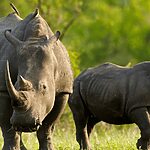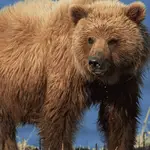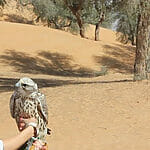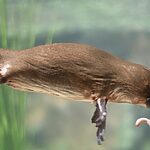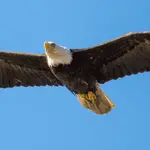16 Interesting Animals in Israel – You Might Not Know
Israel is located at the crossroads of Africa, Asia, and Europe. It boasts a diverse array of interesting animals thriving in its varied landscapes. From the iconic Arabian Oryx, once extinct in the wild and now reintroduced to the Negev Desert, to the agile ibexes scaling rocky cliffs in the Judean Desert, the Israel hosts a captivating range of wildlife.
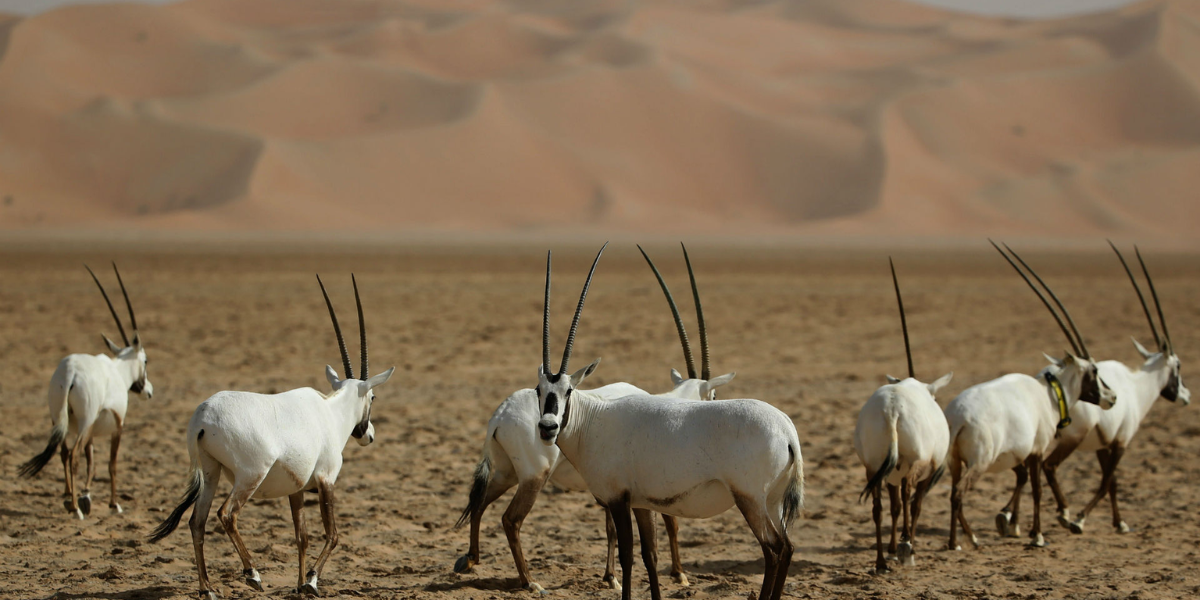
Visitors can encounter unique, and outdoorsy wild animals of Israel thriving in their natural habitat. Like the hoopoe, Israel’s national bird, with its distinctive crown of feathers, and the graceful Dorcas Gazelle roaming the arid plains.
Despite the region’s challenges, Israel is home to conservation efforts aimed at protecting endangered and rare animals such as the Sand Cat and the Persian Fallow Deer. Beyond wildlife encounters, tourists can explore ancient ruins, float in the Dead Sea’s mineral-rich waters
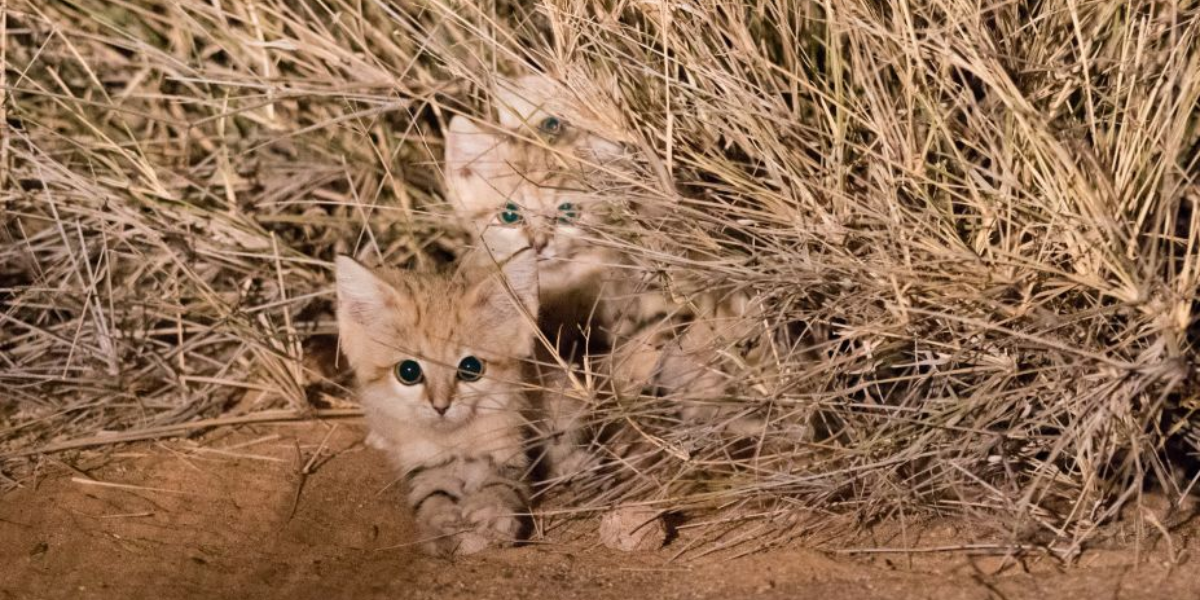
Where to Look for Unusual Wild and Interesting Animals in Israel – (With Interesting Pictures)
Israel, a land of diverse landscapes, is home to a fascinating array of interesting animals. From the elusive Arabian Leopard, once roaming the Judean Mountains, to the agile Nubian Ibex scaling rocky cliffs in the Negev Desert, the country hosts a captivating array of wildlife.
Moreover, in this blog, we have gathered the 16 most unusual wild animals, and the best places to spot them in Israel.
Egyptian Jerboa
The Egyptian Jerboa, scientifically known as Jaculus orientalis, is a fascinating small rodent species native to the deserts and semi-arid regions of North Africa and the Middle East, including Israel.
These interesting animals inhabit sandy desert landscapes, where they construct burrows to seek refuge from the scorching sun and predators.
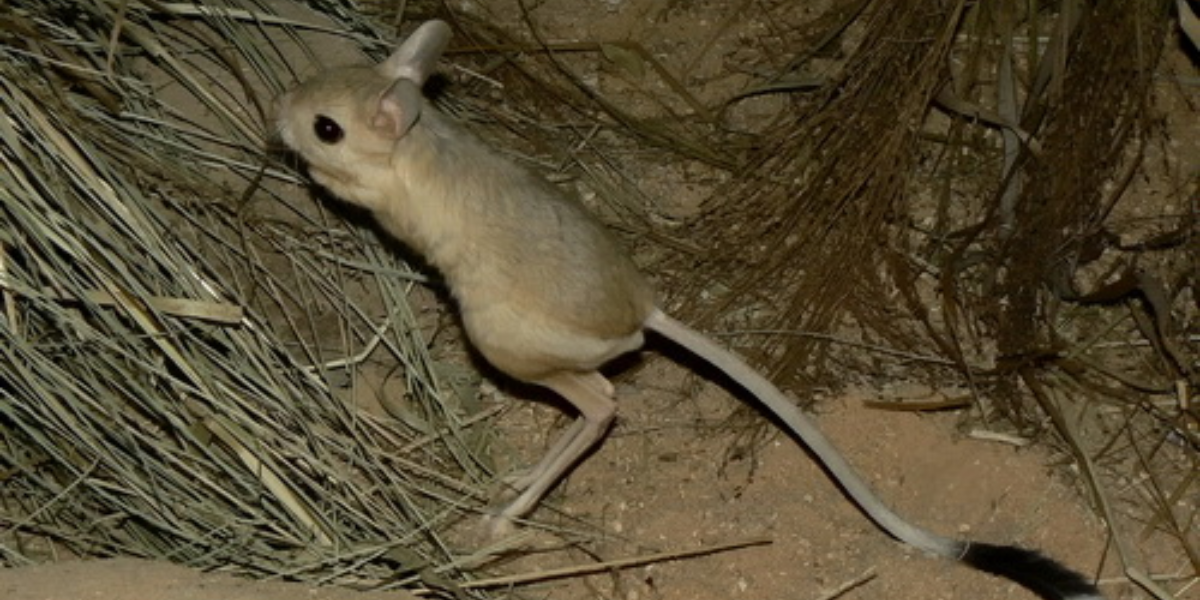
The Egyptian Jerboa is distinguished by its distinctive long hind legs, short forelegs, and long tufted tail, which aids in balance and agility. Their large eyes and ears enable them to detect predators and locate food sources in their arid environment.
Egyptian Jerboa is a completely wild animal and primarily a nocturnal animal. They emerge from their burrows at night to forage for seeds, plants, and insects. Their diet is primarily herbivorous but may include occasional insects and small invertebrates.
The IUCN Red List classified the Egyptian Jerboa as a species of “Least Concern” due to its relatively stable population. However, like many desert-dwelling species, Egyptian Jerboas face threats from habitat degradation, human encroachment, and climate change-induced habitat alterations.
Ongoing conservation efforts aimed at preserving their arid habitats, and playing a crucial role in making them a protected species.
Palestine Mountain Gazelle
The Palestine Mountain Gazelle scientifically known as Gazella gazella gazella. It is a captivating species inhabiting the rocky slopes and mountainous regions of the Middle East, including Israel, Palestine, and Jordan.
These interesting animals in Israel possess distinctive features, including a sandy to reddish-brown coat with white underparts and a dark stripe along its flanks, complemented by elegant, lyre-shaped horns in males and shorter horns in females.
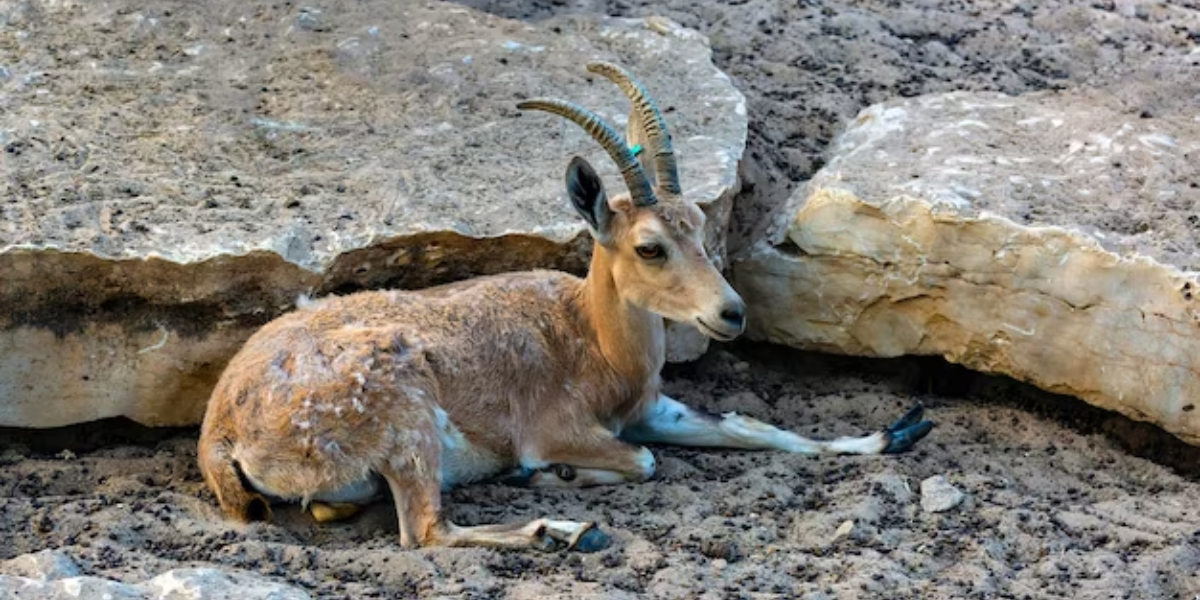
These interesting animals of Israel primarily forage during the early morning and late afternoon, seeking out grasses, herbs, and shrubs in their rugged habitat.
These interesting animals in Israel are listed as “Vulnerable Species” on the IUCN Red List, the Palestine Mountain Gazelles are facing some major threats.
Habitat loss due to urbanization, agricultural expansion, and infrastructure development poses a danger to their survival. Additionally, poaching and overhunting exacerbate the challenges confronting this species.
Conservation efforts, including protected areas and habitat restoration initiatives, are crucial for safeguarding the Palestine Mountain Gazelles.
Arabian Oryx
The Arabian Oryx is scientifically known as Oryx leucoryx. This striking antelope species is native to the arid deserts of the Arabian Peninsula, including parts of Saudi Arabia, Oman, Israel, and Jordan.
These interesting animals are well-adapted to desert life and inhabit vast expanses of dunes and gravel plains, where they rely on sparse vegetation and water sources for survival. These interesting animals are renowned for their elegant appearance.
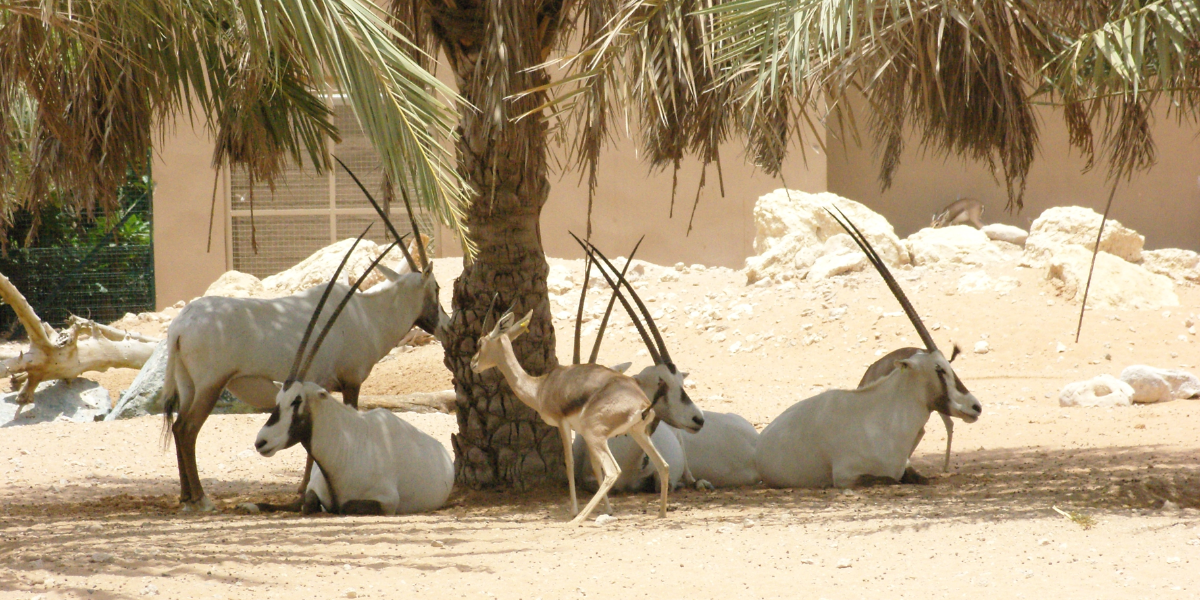
They boast a distinct white coat that reflects sunlight, helping to regulate body temperature in the scorching desert heat. Their long, straight horns add to their majestic stature, with males having slightly longer horns than females.
Arabian Oryx are primarily active during the cooler hours of dawn and dusk when they forage for grasses, herbs, and succulent desert plants. Their keen senses and ability to detect subtle changes in their environment help in avoiding predators like wolves and lions.
These interesting animals are classified as “Vulnerable Species” on the IUCN Red List, facing threats such as habitat loss, poaching, and competition with livestock for resources. Continued conservation efforts are crucial to ensure the survival of this iconic species in its natural habitat.
Persian Fallow Deer
The Persian Fallow Deer, scientifically known as Dama dama Mesopotamia. It is a majestic and endangered species native to the Middle East, including Iran and parts of Israel.
Historically, they roamed across the region’s forested and mountainous areas, seeking shelter in dense woodlands and grazing in open meadows. Presently, their range has significantly diminished due to habitat loss and human encroachment.
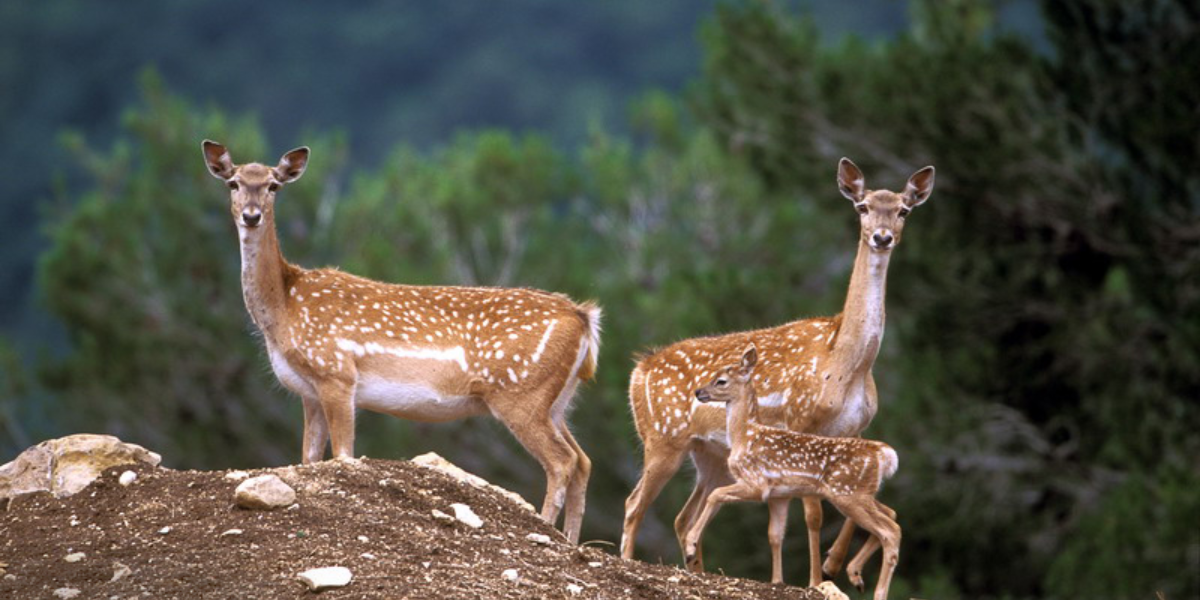
These interesting animals in Israel are known for their elegant appearance. Persian Fallow Deer features a spotted coat in shades of brown, contrasting against a creamy white underbelly. They possess large, branching antlers that add to their regal stature.
These deer are primarily crepuscular, meaning they are most active during dawn and dusk, utilizing the cover of darkness to forage for food and avoid predators.
Tragically, the Persian Fallow Deer is a ” Critically Endangered Species”, as classified by the IUCN Red List. Their population has dwindled due to habitat destruction, poaching, and competition with introduced species.
Conservation efforts are underway to protect their remaining habitats and establish breeding programs to safeguard the Persian Fallow Deer.
Sand Cats
Sand Cats is scientifically known as Felis margarita. These are captivating felines uniquely adapted to arid environments, primarily inhabiting sandy deserts and semi-deserts across North Africa, the Middle East, and Central Asia.
Their natural habitat includes the Sahara Desert, the Arabian Peninsula, and regions of Iran and Pakistan. These nocturnal animals can be recognized by their compact build, short legs, and thick fur with pale, sandy-colored coats adorned with faint stripes and spots, and perfectly camouflaged within their sandy surroundings.
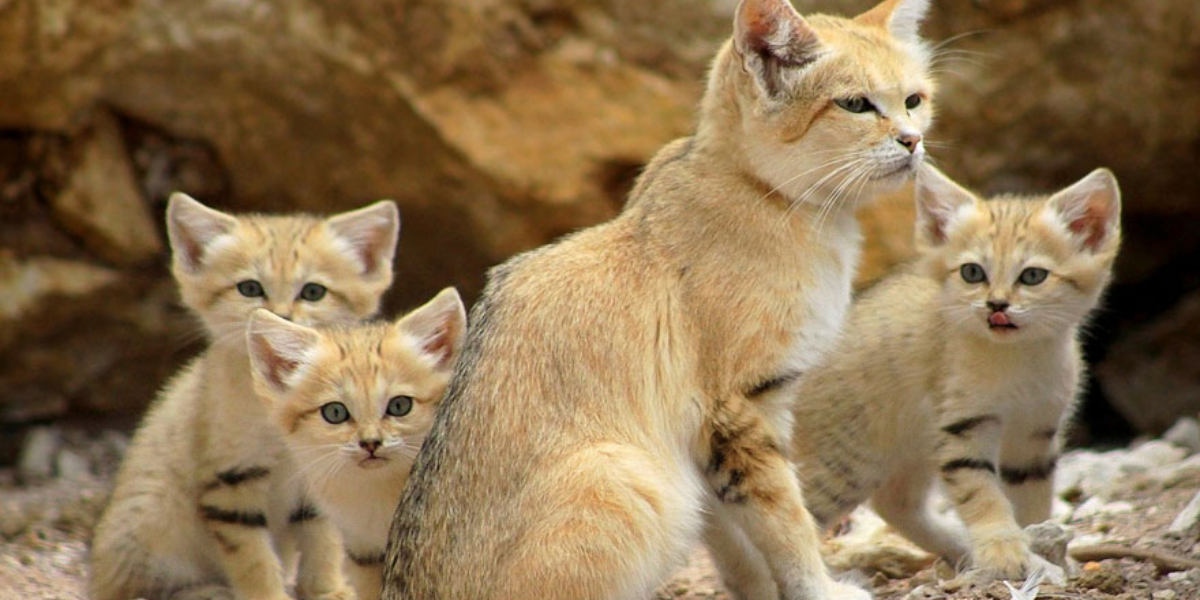
These elusive cats are primarily nocturnal hunters, venturing out under the cover of darkness to stalk their prey, which includes small rodents, birds, and insects. Despite their specialized adaptations, Sand Cats face significant threats to their survival.
They are classified as “Near Threatened” on the IUCN Red List due to habitat loss, degradation, and fragmentation caused by human activities such as agriculture, infrastructure development, and livestock grazing.
Additionally, they are sometimes targeted by hunters and collectors for the illegal exotic pet trade. Conservation efforts focused on habitat preservation and protection are crucial for safeguarding the future of these interesting animals.
Do you know? These cats are much smaller than domesticated cats. These are solitary, and nocturnal animals.
The Bactrian Camel
The Bactrian camel, a interesting species, primarily inhabits the rugged terrains of Central Asia, thriving in Mongolia, China, Iran, and Afghanistan. Remarkably, they are also present among the interesting animals in Israel, where they’ve adapted to diverse landscapes over time.
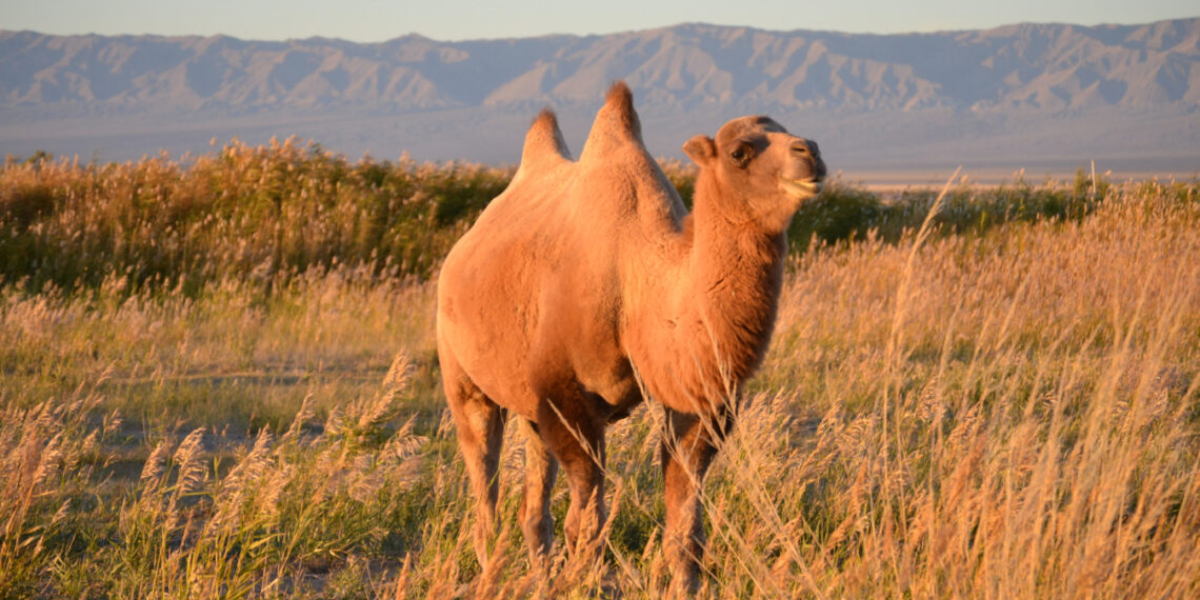
These camels are known for their double humps, which they uses to store fat reserves for sustenance during harsh winters and scorching summers. Bactrian camels possess long, shaggy coats that shield them from extreme weather conditions.
These camels typically hunt for sustenance during dawn and dusk, using their acute sense of smell to locate sparse vegetation in arid environments. Unfortunately, the Bactrian camel faces numerous threats to its survival, including habitat degradation, poaching, and competition with livestock for resources.
The Bactrian camel is listed as “Critically Endangered” on the IUCN Red List, highlighting the urgent need for conservation efforts to safeguard these interesting animals in Israel.
Marbled Polecats
They can be found from southeast Europe to China, and in Israel they were first spotted in the early 20th century in the Jerusalem and Dead Sea areas. Marbled polecats are interesting members of the Mustelidae family, and inhabit a range of habitats across Central Asia, including steppes, deserts, and grasslands.
These fascinating creatures are also found among the diverse array of interesting animals in Israel, where they navigate semi-arid regions with adaptability.
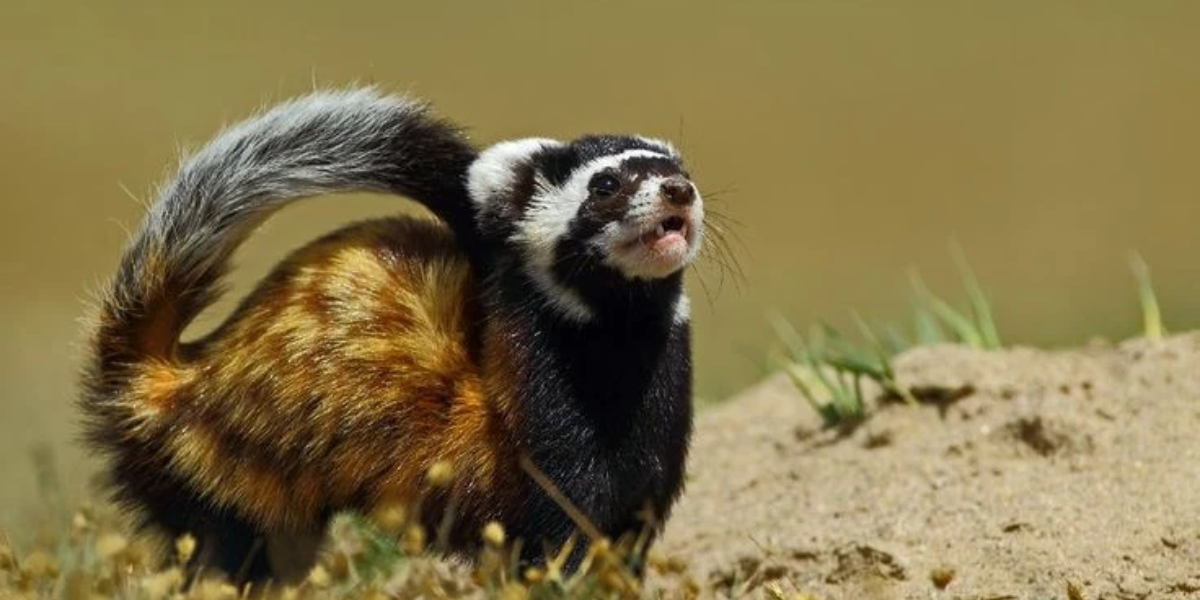
Marbled polecats boast a distinctive appearance, characterized by their compact bodies, short legs, and striking marbled fur patterns, which provide camouflage in their sandy habitats.
These are nocturnal hunters, they prowl under the cover of darkness, preying on small mammals, birds, insects, and reptiles.
Despite their remarkable survival skills, these interesting animals face significant threats from habitat loss due to urbanization, agricultural expansion, and human disturbance. Additionally, they are vulnerable to predation by larger carnivores and suffer from declines in prey populations.
Their conservation status is listed as “Vulnerable Species” on the IUCN Red List. Conservation efforts focus on habitat preservation, reducing human-wildlife conflict, and raising awareness about the importance of protecting these interesting animals.
European Gypsy Moth
The European Gypsy Moth, native to Europe, has expanded its range to North America and parts of Asia, including interesting animals in Israel. These moths primarily inhabit deciduous forests but can adapt to various environments, including urban areas and agricultural lands.
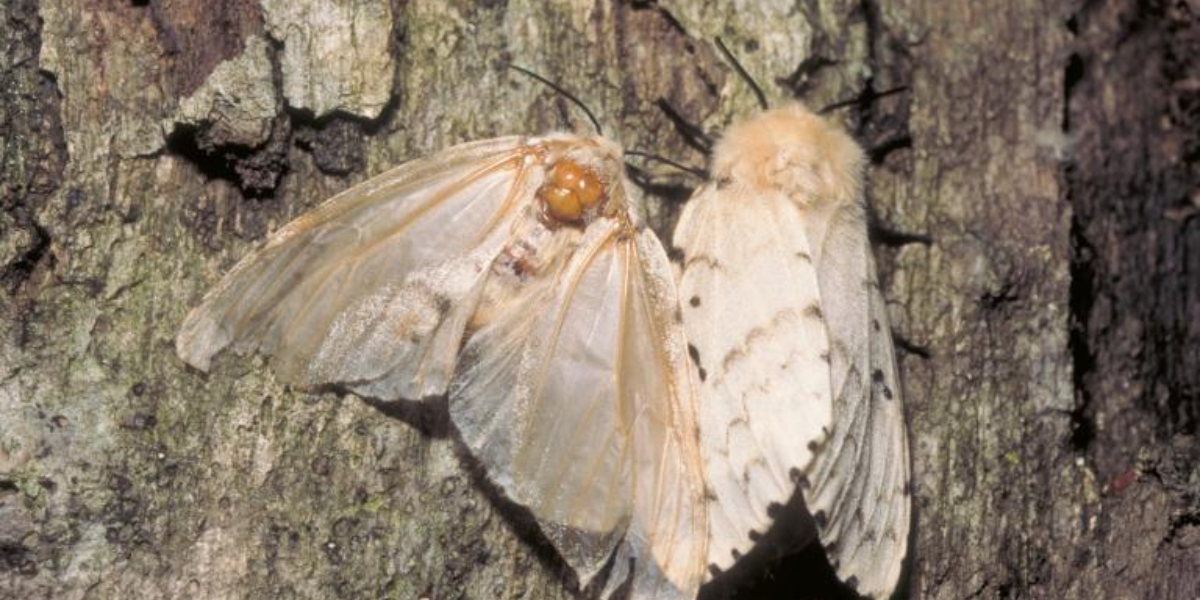
These moths can be recognizable by their brown or gray wings adorned with distinctive markings, European Gypsy Moths have a wingspan of about 2 inches for females and slightly smaller for males. They typically hunt for food, primarily foliage, during their larval stage, which occurs in the spring and early summer months.
Their population is facing several threats, notably the defoliation of host trees, which can lead to forest degradation and economic losses in affected regions. While they are not evaluated for the IUCN Red List status due to their status as an invasive species.
Hula-Painted Frog
The Hula Painted Frog, an intriguing amphibian, is endemic to the Hula Valley in northern Israel, making it one of the most interesting animals in Israel’s diverse ecosystem. The Hula Valley, with its marshes and wetlands, serves as the primary natural habitat for these interesting frogs.
These interesting animals in Israel boast a unique appearance, characterized by vibrant red and black markings along their bodies, providing camouflage among the reeds and vegetation.
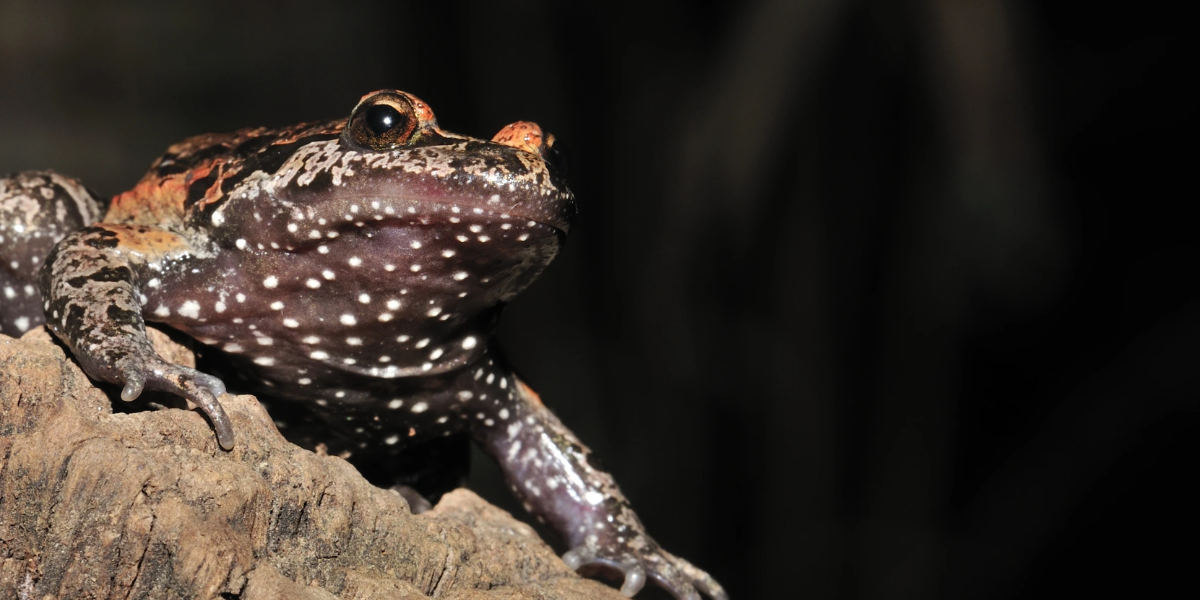
Hula Painted Frogs are nocturnal hunters, preying on insects and small invertebrates under the cover of darkness. Despite their remarkable resilience, the population of Hula Painted Frogs faces significant threats, including habitat destruction due to drainage projects, pollution, and invasive species.
As a result, they are classified as “Critically Endangered Animals” on the IUCN Red List. Conservation efforts, including habitat restoration and captive breeding programs, are underway to safeguard the remaining populations of these iconic frogs.
African Leopard
The African Leopard, a majestic big cat, roams the diverse landscapes of sub-Saharan Africa, thriving in a range of habitats from dense forests to savannas and mountainsides.
Interestingly, while not native, African Leopards are occasionally spotted among the interesting animals in Israel, primarily in the southern desert regions.
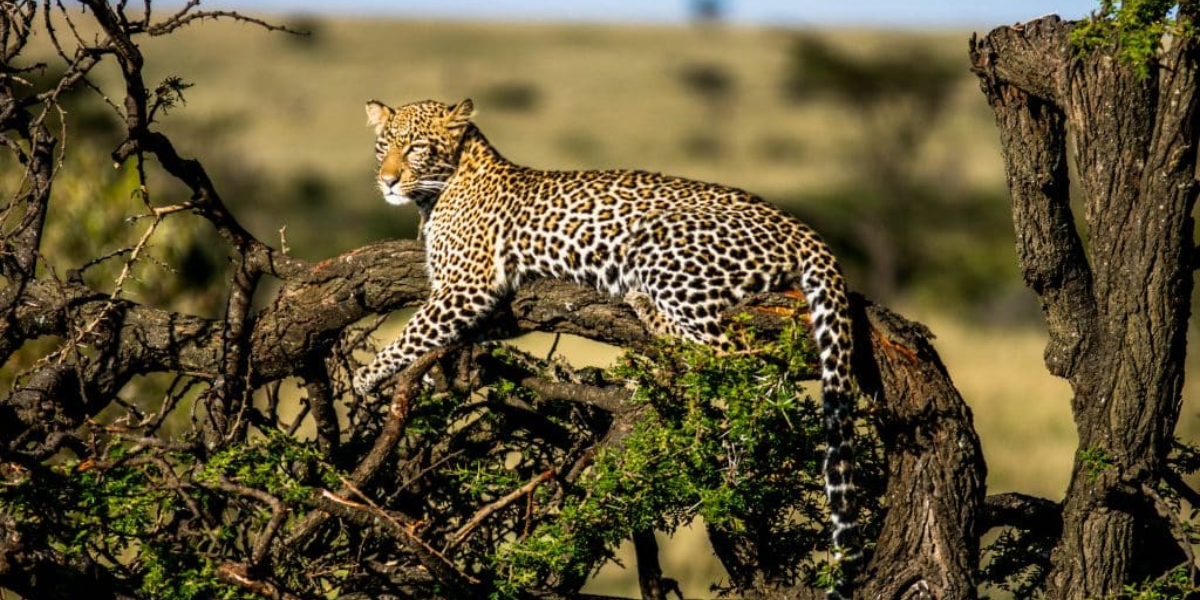
These interesting animals can be spotted by their striking golden coats adorned with rosette patterns, African Leopards boast remarkable agility and camouflage, making them elusive hunters and adept climbers.
These solitary predators typically hunt at night, relying on their keen senses and stealth to ambush prey ranging from small antelopes to larger ungulates. However, African Leopard populations face numerous threats, including habitat loss due to human encroachment, and poaching for their fur and body parts.
Such pressures have led to a decline in their numbers across their range, prompting their classification as vulnerable on the IUCN Red List. Conservation efforts focusing on habitat protection, anti-poaching measures, and community education are crucial for safeguarding the African leopards.
Arabian Leopard
The Arabian Leopard, a majestic and elusive big cat, once roamed across the Arabian Peninsula and parts of the Middle East, including interesting animals in Israel, though now its population has drastically declined.
These leopards primarily inhabit rugged mountainous regions and rocky terrains, seeking refuge in caves and dense vegetation. These big wild cats can be recognized by their golden-yellow coats adorned with distinctive rosette patterns.
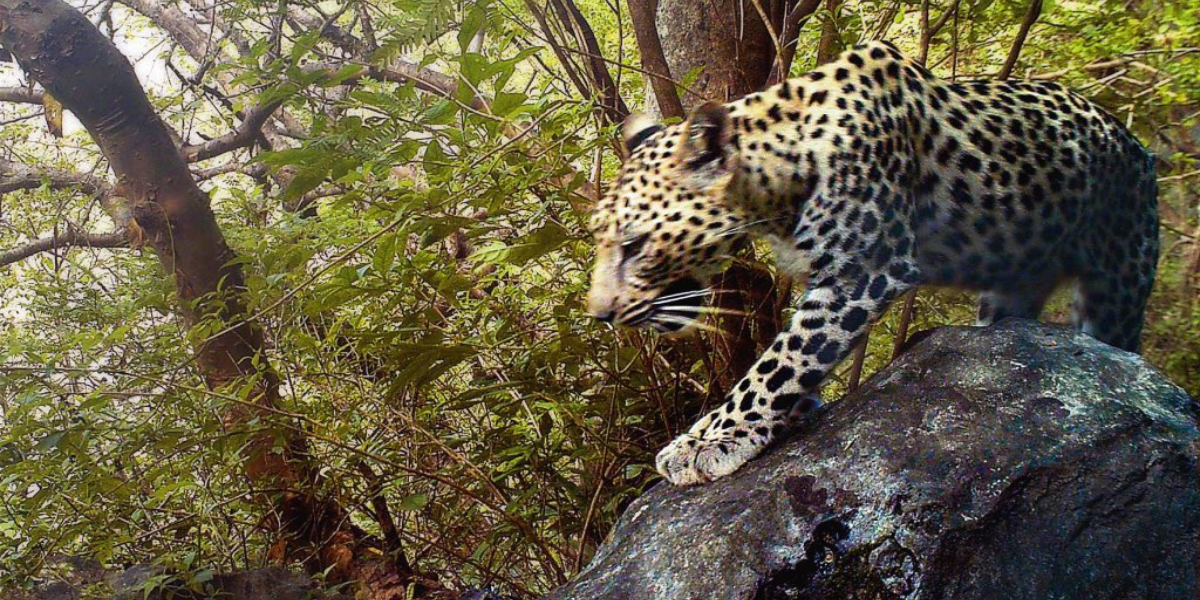
Arabian Leopards are skilled predators, preying on a variety of ungulates and smaller mammals. They are primarily nocturnal hunters, utilizing stealth and agility to ambush their prey under the cover of darkness.
Unfortunately, the Arabian Leopard population is facing severe threats to their survival, including habitat loss due to human encroachment, poaching, and depletion of prey species.
These factors have led to a significant reduction in their population, resulting in their classification as “Critically Endangered” on the IUCN Red List. Conservation efforts, including habitat protection, anti-poaching measures, and community awareness initiatives, are crucial for the preservation of the Arabian Leopard.
Near Eastern Fire Salamanders
The Near Eastern Fire Salamander, an intriguing amphibian species, finds its natural habitats nestled within the wet and moist environment of the Near East, including regions of Israel.
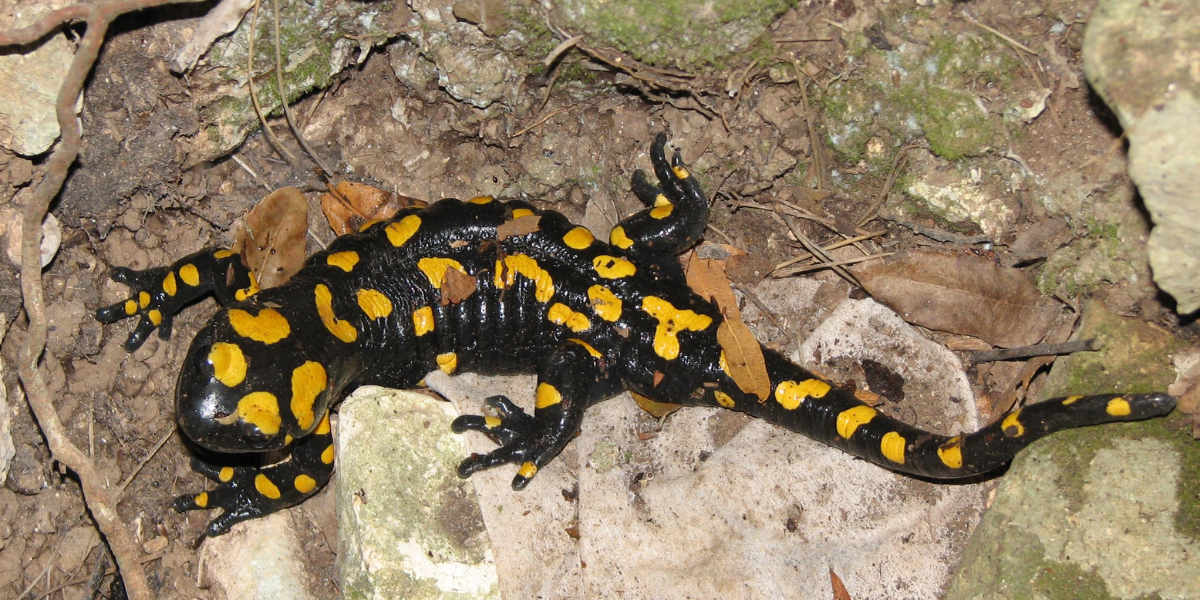
These salamanders inhabit damp, wooded areas, often found near streams, springs, and caves where they seek refuge in cool, moist environments. Their striking appearance features vibrant orange or red markings contrasted against dark brown or black skin, serving as a warning to predators of their toxic secretions.
Near Eastern Fire Salamanders are primarily nocturnal hunters, preying on small insects, worms, and other invertebrates under the cover of darkness. However, their populations face several threats, including habitat loss due to deforestation, pollution of freshwater sources, and the introduction of invasive species.
The Near Eastern Fire Salamander is categorized asa “Vulnerable Species” on the IUCN Red List, highlighting the urgent need for conservation efforts to protect their habitats.
Some Dangerous Animals in Israel – (With Interesting Pictures)
Israel is home to several potentially dangerous animals, although encounters are rare and typically avoidable with proper awareness and precautions. Some of the most dangerous animals in Israel are given below which help you to stay safe.
One interesting and dangerous species is the Palestine Viper, also known as the black snake or Huguli. It’s the most venomous snake in Israel and can be found in various habitats, including rocky areas and agricultural fields. While the attacks are unusual, they can be life-threatening if not immediately treated.
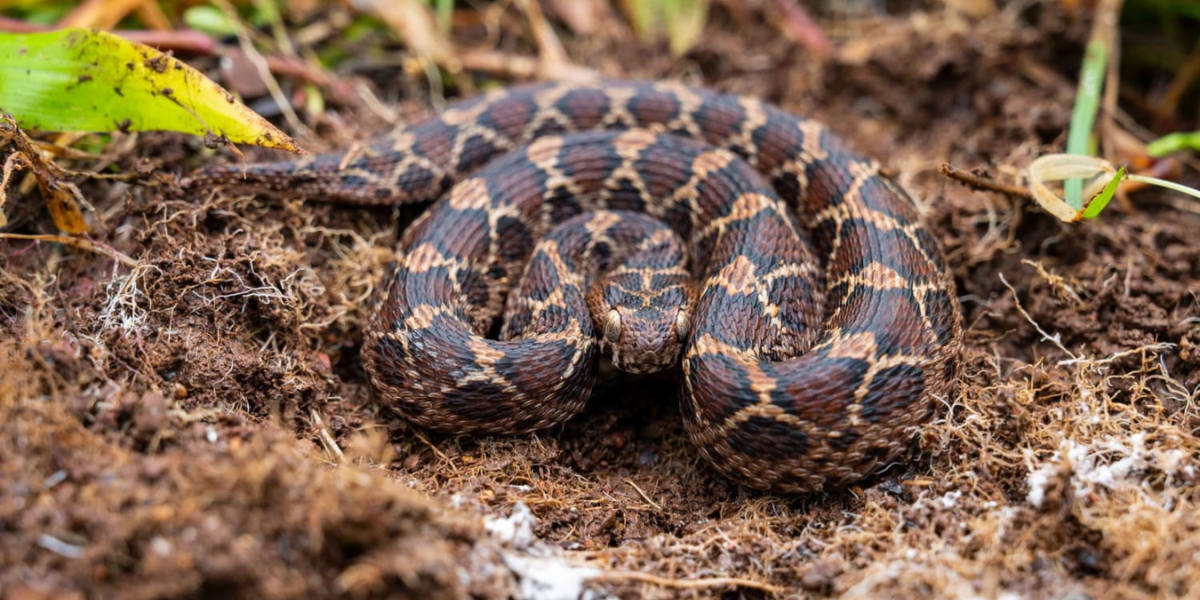
Another interesting and dangerous species is the Horned viper, commonly found in the southern desert regions. Its venom can cause severe pain and tissue damage, though fatalities are rare with appropriate medical intervention.
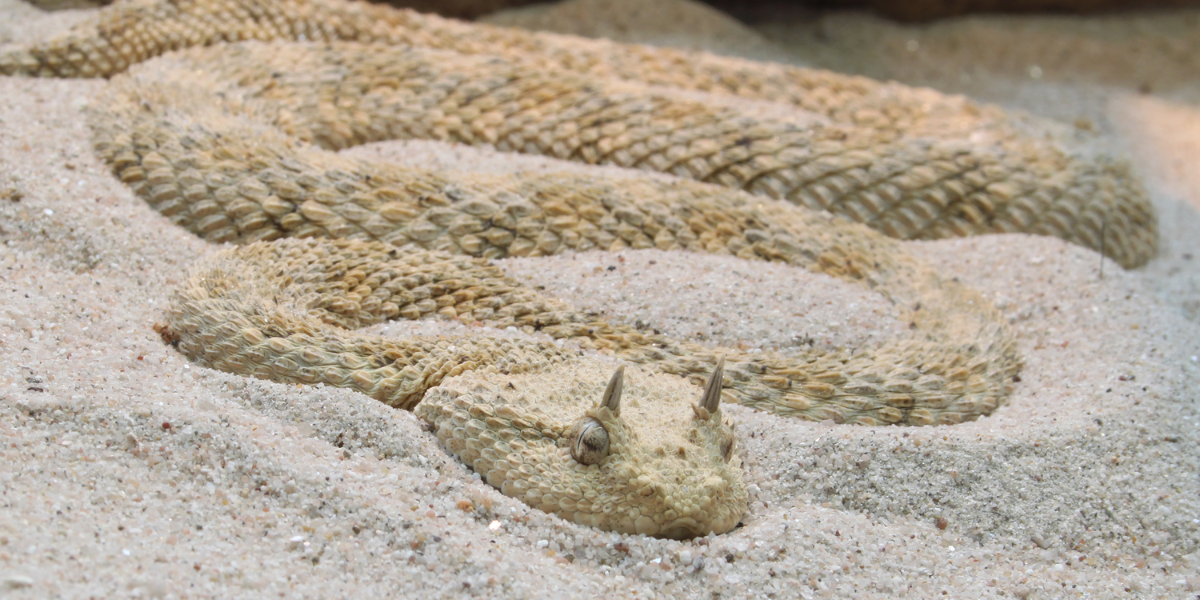
Moreover, Scorpions, including the deathstalker scorpion, are also present, particularly in desert areas. While their stings can be painful and occasionally dangerous, fatalities are uncommon.
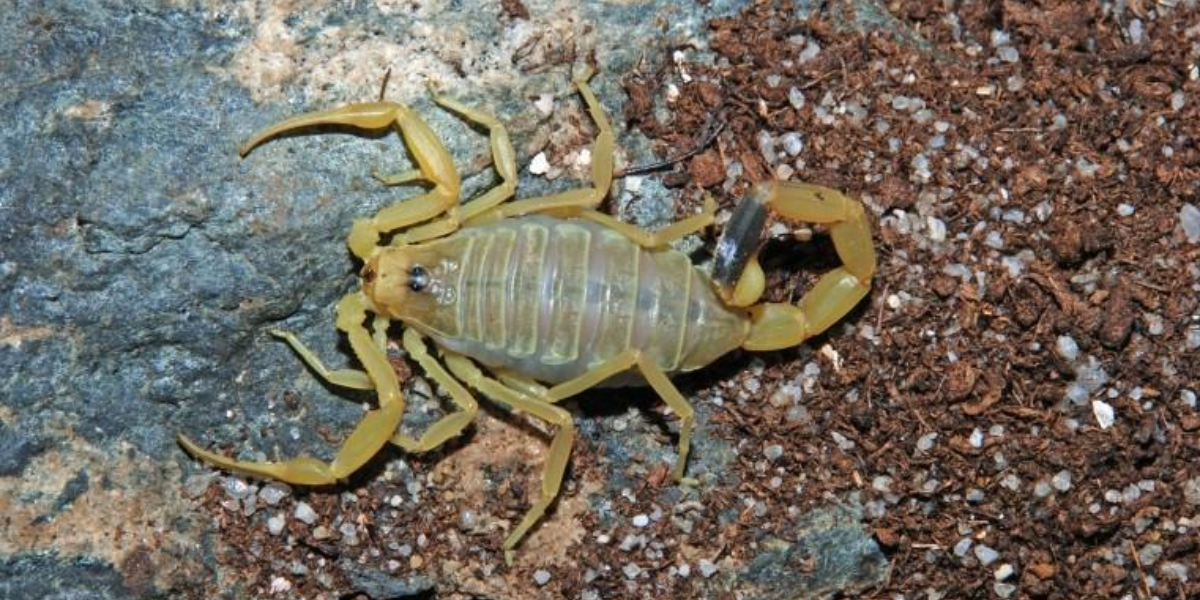
In marine environments, certain species of jellyfish, including the box jellyfish, can pose a threat to swimmers due to their venomous stings. Additionally, encounters with sharks, though rare, have been reported along the Mediterranean coast.
The Mountain Gazelle/Israeli Gazelle – National Animal of Israel
The Mountain Gazelle, also known as the Israeli Gazelle, and are the national animal of Israel. These graceful creatures are endemic to the Middle East, with Israel being one of their primary habitats. Found in diverse landscapes ranging from rocky hillsides to open plains.
These interesting animals in Israel have sleek, tan-colored fur and distinctive curved horns, Mountain Gazelles possess remarkable agility and speed, enabling them to navigate rugged terrain and evade predators such as wolves and jackals.
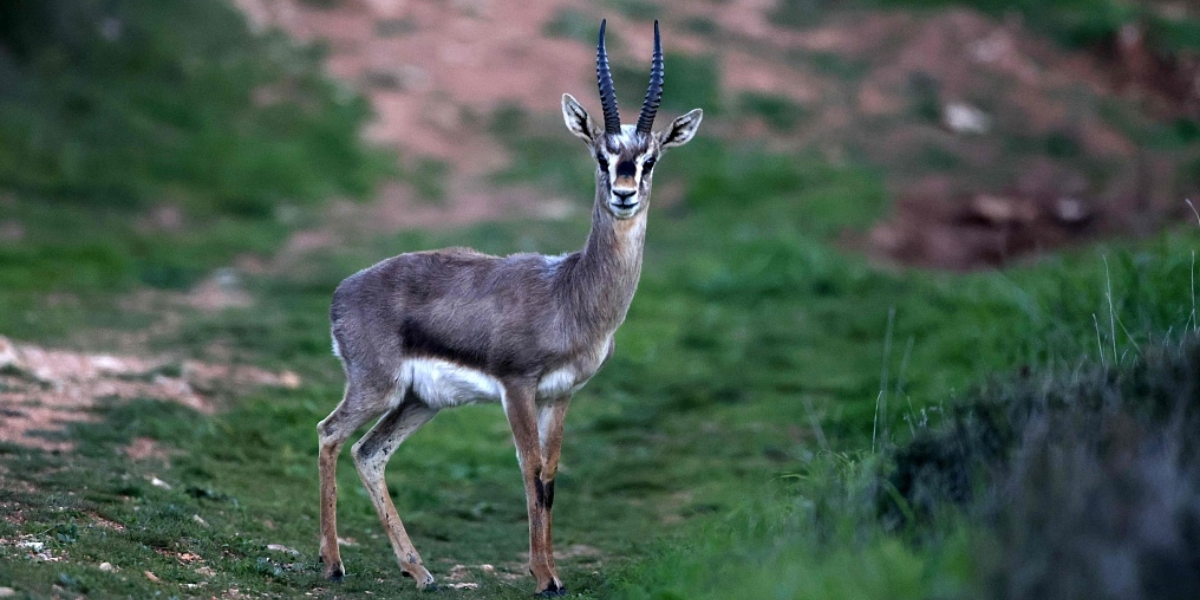
They primarily graze on grasses, herbs, and shrubs, using their keen senses to detect potential threats while foraging in the open. Despite their resilience, Mountain Gazelles face numerous challenges to their survival, including habitat loss due to urbanization, agriculture, and infrastructure development.
Additionally, illegal hunting and poaching pose significant threats to their populations, leading to their classification as a “Vulnerable Species.” Conservation efforts in Israel focus on habitat preservation, wildlife corridors, and initiatives to combat poaching and illegal hunting.
Frequently Asked Questions about Interesting Animals in Israel
What is Israel’s main animal?
The Israeli gazelle is the national animal of Israel.
What animals did Israel have?
Israel has many interesting animals such as Ibex, Camel, Arabian Oryx, Leopards, hyrax, bats, etc.
What is a common animal in Israel?
Foxes, jackals, some snakes, boars, various kinds of deer, and buck are some common animals native to Israel.
What is Israel’s national bird?
Hoopoe is the national bird of Israel.
- What Should I Do If A Koala Bites Me? Safety Guide - 2024-05-30
- Are Kangaroos Born Without Hind Legs? A Fascinating Journey - 2024-05-30
- Animals That Look Like Squirrels - 2024-05-30


